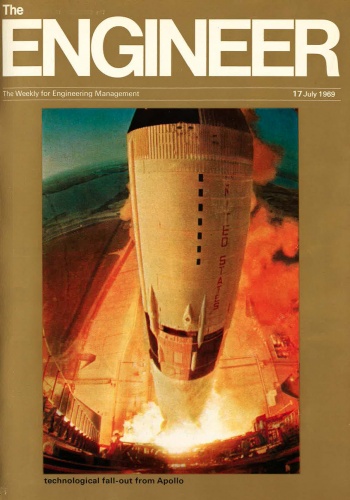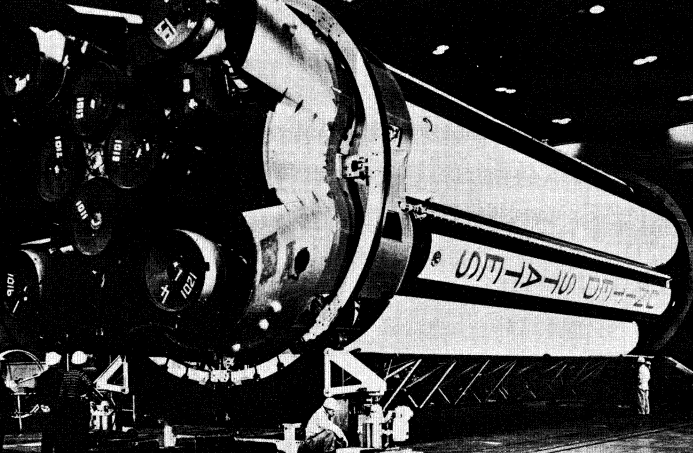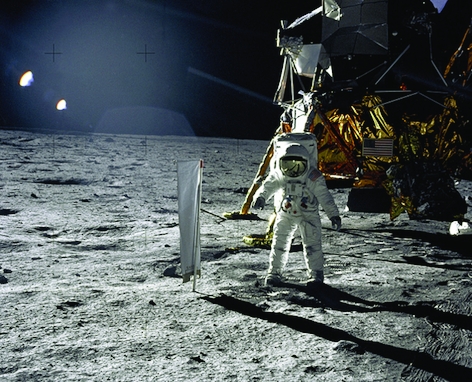
How do you mark the most significant achievement in the history of mankind? The Apollo landings of the late 60s and early 70s are still seen as the high water mark of humanity, and as The Engineer pointed out, much of the millions of words of press coverage of the first mission to land, Apollo 11, was concerned with the human stories of the three astronauts on board.
READ OUR ARCHIVE COVERAGE OF APOLLO 11 HERE
Admirably sticking to its remit, The Engineer decided it would be apt to focus instead upon the machinery that would be taking our first extraplanetary pioneers a quarter of a million miles from the Earth's surface to the moon’s, and back again in safety.

In a special issue entitled "The Mightiest Machine in the World", the magazine explained this decision. "Not surprisingly the stage has been dominated by the three astronauts who will land on the moon. We join with all men of goodwill in wishing them success. But the welter of publicity focused on the astronauts casts a long shadow which tends to obscure the extraordinary achievements of the thousands of specialists whose technical accomplishments have made the moon landing feasible." One notable quirk of the coverage is that with typical British formality, the issue consistently refuses to use the name Buzz Aldrin, instead referring to him always by his given name of Edwin.
Over the subsequent pages, The Engineer not only went into detail about the technical specifications of the Saturn 5 launcher, Apollo Command Module, Service Module and Lunar Excursion Module, it also attempted to place the mission in the context of the United States economy and of its effect on industry. The cost of the Apollo mission exceeded $15 billion, and the greatest economic significance of this was in "the growth of national industrial strength that has occurred in response to the opportunity and challenges of the space programme".

For example, it notes that NASA's work on space communications systems led directly to the establishment of the Communications Satellite Corporation, and to a subsequent “many-fold increase in the ability to communicate, a major decrease in the cost of communication, and an international expansion of communications facilities". Benefits had included unprecedented televisation of the Olympic Games, but even more significant was a 25% drop in the cost of a long-distance telephone call: "a permanent benefit to every citizen".
The development of precision manufacturing techniques was also credited to the rigours of space exploration, as was the development of new products and new techniques. It's now a cliche to mention nonstick pans in the context of the Apollo missions, but the Journal avoided this, instead mentioning "a 24 ounce battery-operated TV camera , bearings coated with a ceramic-banded dry lubricant for use at high temperatures, and the technique for polishing metal masters to shape elliptical glass mirrors"; it also mentions the transfer of successful management techniques from the industrial side of the programme to universities, government agencies and industrial corporations. The total spin-off from Apollo in economic terms have been cautiously estimated to be £1 billion a year, the engineer adds; "their value to a better environment and may be immeasurable".
READ OUR ARCHIVE COVERAGE OF APOLLO 11 HERE
In an optimistic note, the article even suggests (remarkably for 1969) that as astronomy had led to the harnessing of nuclear energy, space sciences were suggesting "regimes of power" that could free mankind from reliance on diminishing or expensive fuels.
The issue is lavishly illustrated with photos of Saturn 5 and the Apollo vehicles, and it details the stages in which the launcher in particular was developed. This included proving the concept of clustered rocket engines, development of the guidance system, and experience in handling liquid hydrogen fuel, which was used in preference to liquid oxygen and kerosene for the second and third states of the rocket because the higher energetic value of oxygen and hydrogen. But remaining consistent with the stated goal, there are absolutely no pictures of Neil Armstrong, Buzz Aldrin, or Michael Collins to be seen anywhere.





Red Bull makes hydrogen fuel cell play with AVL
Formula 1 is an anachronistic anomaly where its only cutting edge is in engine development. The rules prohibit any real innovation and there would be...